- Home
- William Shakespeare
The Arden Shakespeare Complete Works Page 2
The Arden Shakespeare Complete Works Read online
Page 2
He began, however, more humbly. We know a remarkable amount, for this period, about Shakespeare and his family. He was born late in April 1564 in Stratford-upon-Avon. The parish church records his baptism on 26 April; his unrecorded birthdate is conventionally set three days earlier on 23 April, St George’s Day (and also, apparently, the date of Shakespeare’s death). His father was John Shakespeare, a glover and later a wool merchant, and his mother was Mary Arden, daughter of a well-established farmer in the nearby village of Wilmcote. Though the records have not survived, we can safely assume that he attended the King’s New School, the Stratford grammar school with its strenuous classically based curriculum, but we know for certain that at the age of eighteen he married Anne Hathaway, also of Stratford, and that a daughter, Susanna, was born to them, as the parish records note, on 26 May 1583. On 2 February 1585 the register records the birth of twins, Hamnet and Judith.
Shakespeare was well established in London by the early 1590s as an actor and as a playwright. In 1592 a book appeared in which Robert Greene criticized an unnamed actor, ‘an upstart Crow’, for his presumption in writing plays, supposing himself ‘as well able to bombast out a blank verse’ as any and imagining himself ‘the only Shake-scene in a country’. Since Greene’s attack contains a parody of a line from 3 Henry VI, it seems certain that it is Shakespeare that he aims at. By 1592, then, Shakespeare had already established himself in the theatre and drawn the ire of a jealous rival. In 1594, Court records indicate payments to Shakespeare and two other sharers in the Lord Chamberlain’s Men for ‘two several comedies or interludes showed by them before her Majesty in Christmas time last’. References to Shakespeare’s activity in the theatre abound, and in 1598 Francis Meres claimed that Shakespeare could be compared with Seneca for the writing of tragedy and with Plautus for comedy, indeed that among English writers he was ‘the best of both kinds for the stage’. But he wrote non-dramatic poetry as well. When a severe outbreak of plague beginning in the summer of 1592 forced the closing of the theatres until the spring of 1594, Shakespeare wrote two narrative poems, Venus and Adonis and The Rape of Lucrece, both dedicated to Henry Wriothesley, the third Earl of Southampton, and printed by a former fellow-resident of Stratford, Richard Field, in 1593 and 1594 respectively; and an edition of Shakespeare’s Sonnets was published by Thomas Thorpe in 1609.
But Shakespeare’s primary work was in the theatre, and it was the theatre that made him a wealthy man. His money, however, came neither from commissions nor from royalties for his plays but from his position as a sharer in the Lord Chamberlain’s Men (who, with the accession of James to the throne in 1603, became the King’s Men), by which he was entitled to one-tenth of the company’s profits, a share handsome enough to permit him considerable investment in real estate. In 1597 he bought for £60 the substantial freehold house in Stratford known as New Place, the second largest dwelling in the town; in 1602, he purchased 107 acres of land in the manorial fields to the north of Stratford for £320, and later that year a cottage in Stratford on Chapel Lane; in 1605 he bought a half-interest in a Stratford tithe farm for an additional £440; and in 1613, with three other investors, he acquired a ‘tenement’ in Blackfriars for £140.
If Shakespeare’s business dealings can be traced in the Court Rolls, his family’s lives and deaths can be traced in the Stratford parish register. His son Hamnet died at the age of eleven and was buried on 11 August 1596. Shakespeare’s father died in September 1601, his mother in 1608. Shakespeare’s elder daughter, Susanna, married John Hall, a well-respected Stratford physician, in Holy Trinity church on 5 June 1607. His younger daughter, Judith, married Thomas Quiney on 10 February 1616. Shakespeare’s wife died on 6 August 1623; she had lived to see a monument to her husband installed in Holy Trinity, but passed away just before the publication of the First Folio of his plays, the more lasting monument to his memory.
Shakespeare himself had died in late April of 1616, and was buried on the north side of the chancel of Holy Trinity, having left a will written that January. He left ten pounds for ‘the poor of Stratford’, remembered local friends and his extended family, and allotted 16s. 8d. each for memorial rings for his theatrical colleagues, Richard Burbage, John Heminges and Henry Condell. He left £150 to his daughter Judith, and another £150 to be paid if ‘she or any issue of her body be living’ three years from the execution of the will, but the bulk of the estate was left to Susanna. His wife is mentioned only once, in an apparent afterthought to the document: ‘Item, I give unto my wife my second best bed with the furniture.’ The bequest of the bed and bedding has led many to speculate that this was a deliberate slight, but English customary law provided the widow with a third of the estate, and the ‘second best bed’ was almost certainly their own, the best being saved for guests.
Yet in spite of the detailed records that remain, allowing us to trace major and minor events in the lives of Shakespeare and his family, as well as to see his vital presence in the life of the London stage, some critics have passionately held that the author of the plays was someone other than ‘the man from Stratford’. It was not until the eighteenth century that anyone questioned Shakespeare’s authorship, but since then many, including Mark Twain, Henry James and Sigmund Freud, have been attracted to the anti-Stratfordian heresy. Various candidates have been proposed. Christopher Marlowe, Francis Bacon, Edward de Vere, the seventeenth Earl of Oxford, Queen Elizabeth, even Daniel Defoe (who was not born until 1661) have all been suggested as the ‘real’ author of ‘Shakespeare’s’ plays and poems. The controversy, however, has little to recommend it except its unintended humour; anti-Stratfordian champions have sometimes had unfortunate names, including Looney, Battey and Silliman. Although usually energetically asserted, the belief that someone other than Shakespeare wrote the plays seemingly derives from simple, if unattractive, social snobbery: a certainty that only someone educated at university or at court would be capable of such artistry. The desire to give the plays a more socially distinguished patrimony than they in fact had at least attests to the importance they have come to assume in our culture. All in all, however, there seems little doubt that William Shakespeare, the glover’s son from Stratford, wrote the plays that bear his name, though their greatness can hardly be illuminated or intensified by the evidence of the life of their author.
SHAKESPEARE AND THE THEATRE
At an unknown date between 1585 and 1591, William Shakespeare left Stratford-upon-Avon and became an actor and playwright. Early tradition holds that he was for a few years before this a country schoolmaster (which might help to explain his close knowledge of some Latin texts, including plays by Plautus and Seneca). In 1587 the Queen’s Men visited Stratford shortly after they lost a leading actor, William Knell, killed in a duel at Thame in Oxfordshire. Whether or not this may be imagined as Shakespeare’s opportunity to join the players, plays from the Queen’s Men’s repertoire were, on the evidence of later allusions in his plays, well known to him. His name is, however, more often associated with two other companies, Lord Strange’s (Derby’s) Men and its offshoot the Earl of Pembroke’s Men, which collapsed in the summer of 1593. A new play, called ‘harey the vj’ and usually identified as King Henry VI, Part 1, was performed by Strange’s Men at the Rose playhouse on 3 March 1592 and thereafter. Titus Andronicus, played by the Earl of Sussex’s Men, followed on 23 January 1594: in June two more performances of it were given by the Lord Admiral’s Men and the Lord Chamberlain’s Men. By June 1594 Shakespeare had become a leading member of a newly-formed company, the Lord Chamberlain’s Men. He would remain with them for the rest of his career. Of his repertoire as an actor we know almost nothing. His name heads the list of ‘principal actors in all these plays’ prefaced to the First Folio in 1623. It had earlier appeared in the similar lists for Ben Jonson’s Every Man in His Humour (1598) and Sejanus, His Fall (1603), printed in the Jonson Folio of 1616. Beyond this, we have only late seventeenth-century traditions that he played Adam in As You Like It and the Ghost in
Hamlet.
1594 saw the stabilization in London of the leading playing companies. The Admiral’s Men, led by Edward Alleyn, under the management of Philip Henslowe, were at Henslowe’s theatre, the Rose, on Bankside in Southwark (whose foundations were partially revealed by archaeologists in the spring of 1989, before being covered once more for the construction above them of an office block). The Chamberlain’s Men, led by Richard Burbage and managed by his father, James, acted at the Theatre, north of the Thames, in Finsbury (not far from the modern Barbican Centre). The Theatre, built in 1576 for James Burbage, was the first building to be erected in the suburbs of London expressly for the presentation of plays. Henslowe’s Rose followed in 1587; after it came the Swan (1595); the Globe (1599), replacing the Theatre and built with its structural timbers, bodily removed through London and across the River Thames from Finsbury to Southwark; the Fortune (1600), built in north London to replace the Rose; the Red Bull (1605); and the Hope (1614). The building of the Globe was an important event for Shakespeare, and we can see in the first plays he wrote for it, perhaps As You Like It and King Henry V, more surely Julius Caesar and Hamlet, a renewed awareness of the propositions that ‘all the world’s a stage’ and that every man and woman is a performer in the wider theatre of the world. Not for nothing was it called the Globe.
Before 1576 plays had been performed, as they continued to be throughout the lifetime of Shakespeare, in a wide variety of locations, indoors and out. In London, the yards of coaching inns were used as theatres (and sometimes adapted for the purpose at considerable expense). Throughout the country the halls of schools, towns, colleges and noble houses were used for occasional performances by visiting players. Models for the public playhouses in London included inn yards as well as the baiting rings on the south bank used for bull- and bear-baiting. A large auditorium (with 20 sides and a diameter of 100 feet in the case of the Globe) had seats arranged in three galleries, and contained within it the separate structure of a stage and backstage building. The stage was covered by a canopy, or ‘heavens’, which could house winding-gear for lowering large properties or descending gods, and it was accessible from below through a trapdoor. At the back of the stage, behind a wall with two or three large doors in it, lay the ‘tiring-house’ (dressing rooms and wings combined), above which was a gallery, reached by a stair and divided into a number of ‘rooms’ or boxes, where the most important members of the audience could sit to see and to be seen. When necessary, one or more of these boxes could be used to represent a window, or walls, if required by action ‘above’ or ‘aloft’, and they may also have housed the musicians.
Image removed — rights not available
3 Portrait of Richard Burbage, leading actor of the Chamberlain’s Men
Image removed — rights not available
4 The Globe Theatre, as recreated in the 1990s on London’s Bankside
Indoor acting continued throughout the period at smaller ‘private’ playhouses, of which the earliest were set up in the halls of former monastic buildings within the city of London. Holding an audience of some 600 or 700 (against the 2,500-3,000 capacity attributed to the public playhouses) these theatres were used for plays appealing to a more restricted and wealthier audience. While you could stand in the yard at the Globe for a penny, the cheapest seat at the Blackfriars or St Paul’s theatre would cost sixpence. The indoor playhouses were associated with companies of boy players, composed of choristers of the Chapel Royal and of St Paul’s Cathedral. The playhouses Shakespeare wrote for were the Theatre (and its substitute the Curtain), the Globe and, after 1608 or 1609, the Blackfriars private theatre.
Image removed — rights not available
5 Detail from Wenzel Hollar’s engraving A Long Bird’s-Eye View of London, 1647, showing the rebuilt Globe
Image removed — rights not available
6 The principal actors in the King’s Men, as listed in the First Folio of 1623
During the lifetime of Shakespeare adult playing companies grew to a size and achieved a stability which justified the expense of building permanent theatres around London. Such companies consisted of some dozen to fifteen men and three to five boys, who trained as the apprentices of leading members and played female and juvenile roles. Earlier in the century, companies were much smaller – sometimes as small as three men and a boy – and playwrights had developed writing techniques to allow a cast of five to double in up to seventeen roles. Survival of such techniques accounts for the very large number of roles for Shakespeare’s histories and tragedies, where most actors would have played two or more parts, some of them appearing for no more than a scene or two.
In sixteenth- and early seventeenth-century Europe the prohibition of public acting by women and the convention of all-male casting were peculiar to England. Though easily accepted by audiences, the playing of female roles by boys led writers to emphasize the femininity of the women in their plays to an extent that the use of female performers would have rendered unnecessary. Shakespeare had much to do with the popularity of female roles in which a girl spends much of the action in male disguise. While this may have been an easier convention to accept when the role was played by a boy, it also meant that the performer’s skill was required, not to impersonate a young man, but to keep the audience aware that ‘he’ was ‘really’ a girl under the male costume. In the early Jacobean years the King’s Men evidently had a boy or young man of exceptional talent, if we assume that the roles of Lady Macbeth, Cleopatra and Volumnia in Coriolanus may have been written for the same actor; the same must be true of such roles as Queen Margaret in the King Henry VI plays and Katherine in The Taming of the Shrew in the early 1590s, and of the comic heroines of Much Ado About Nothing, As You Like It and Twelfth Night around the turn of the century.
As the plays indicate, the skills demanded of an actor included singing, dancing and sword-fighting as well as the rhetorician’s arts of speech and significant gesture. We know little, however, about acting styles in the period; nevertheless, it is not fanciful to suppose that the changing style of the plays written between 1590 and 1620 reflects a change by actors from a broad style, dependent on resonant vocal delivery and confident use of expansive gesture, such as suited open-air playhouses, to a subtler and more intimate manner, less dependent on emphatic speech and allowing a wider range of gesture and even facial expression, which could register with most of the audience in the smaller space of a private playhouse. The contrast is clear if The Tempest is compared with the King Henry VI plays or Titus Andronicus.
It is likely that Shakespeare’s own plays were instrumental in changing styles of acting between 1590 and 1614. He had the unparalleled good fortune to work in the same company for some twenty years, as actor and as principal dramatist. He wrote for actors who were also his business partners and co-owners of the playhouses they played in. We must presume that he had some say in how the plays he wrote for them were presented. The strength of the company is reflected in the demands his plays make on actors. The Jacobean plays, in particular, regularly require strong performances in ten or a dozen significant roles – a hard requirement for any company to fulfil. The identification of actor with role – the building of a ‘character’ – is a commonplace of modern theatre. In Shakespeare’s time it seems to have been something of an innovation: indeed a ‘character’ would have been understood to mean a stock or stereotyped stage figure such as the old man, the melancholy lover or the country clown. Richard Burbage, Shakespeare’s leading actor, attracted comment for (exceptionally) remaining in character when he came off-stage during a performance. Not the least of Shakespeare’s achievements was the writing of dramatic roles a few hundred lines in length which can reward close and subtle verbal, moral or psychological analysis, three-dimensional fictions which create the illusion of the authentically recognizable inconsistency of human individuals.
Image removed — rights not available
7 The earliest illustration of a work by Shakespeare; a sc
ene from Titus Andronicus, attributed to Henry Peacham, c. 1595, 1605 or 1615
Career and chronology
We do not know the dates of composition of all of Shakespeare’s plays. Such evidence as there is is circumstantial: dates when they (or works on which they are certainly based) were published, or dated references to, and comments on, early performances can narrow the limits for many of them, while a very few allude to datable events of the time. On such evidence, supported by internal features of style, metre and subject, the plays can be arranged, with varying degrees of certainty, in groups relating to five phases of his theatrical career.
First come the plays Shakespeare had probably already written before the forming of the Chamberlain’s Men in the summer of 1594. These are The Two Gentlemen of Verona, The Taming of the Shrew and possibly The Comedy of Errors, the three parts of King Henry VI, King Richard III and Titus Andronicus. Plays written for the new company at the Theatre in the five years from 1594 until the opening of the Globe in the autumn of 1599, in possible sequence of composition, are Romeo and Juliet, Love’s Labour’s Lost, A Midsummer Night’s Dream, King Richard II, King John, The Merchant of Venice, the two parts of King Henry IV, Much Ado About Nothing, The Merry Wives of Windsor and (at some date before summer 1598) the lost Love’s Labour’s Won. As You Like It and King Henry V may belong in this group, though both show signs of having been written with the Globe in mind.
Plays for the Globe from 1599 until the death of Queen Elizabeth I in the spring of 1603 are Julius Caesar, Hamlet, Twelfth Night, Troilus and Cressida, Othello and possibly All’s Well That Ends Well. As a leading member of the King’s Men, Shakespeare seems to have reduced his output from the previous average of two plays per year. His new plays from 1603 to 1608 were: Measure for Measure, Timon of Athens, King Lear, Macbeth, Antony and Cleopatra, Pericles and Coriolanus. The final period, from the company’s recovery of the indoor Blackfriars Theatre for winter use in 1608–9 to 1613–14, saw composition of The Winter’s Tale, Cymbeline, The Tempest and of three plays written in collaboration with John Fletcher, King Henry VIII, the lost Cardenio and The Two Noble Kinsmen.

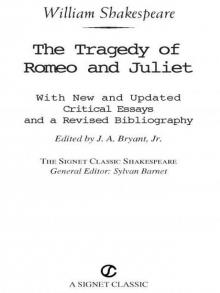 Romeo and Juliet
Romeo and Juliet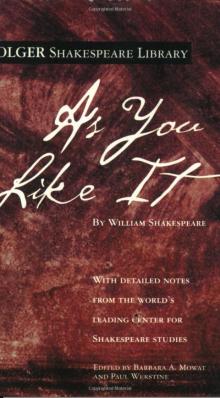 As You Like It (Folger Shakespeare Library)
As You Like It (Folger Shakespeare Library)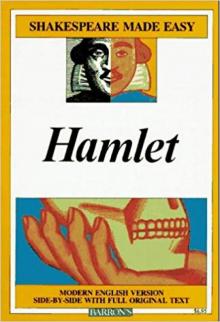 Hamlet
Hamlet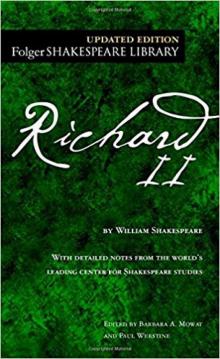 Richard II (Folger Shakespeare Library)
Richard II (Folger Shakespeare Library)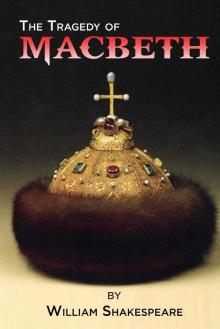 Macbeth
Macbeth Henry V
Henry V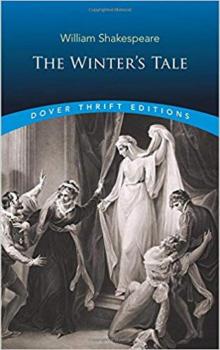 The Winter's Tale
The Winter's Tale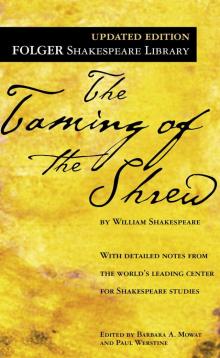 The Taming of the Shrew
The Taming of the Shrew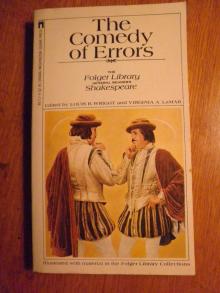 The Comedy of Errors
The Comedy of Errors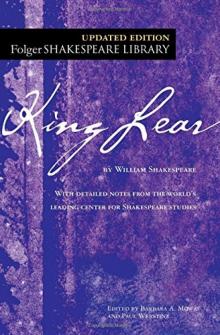 King Lear (Folger Shakespeare Library)
King Lear (Folger Shakespeare Library)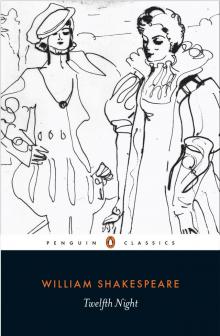 Twelfth Night
Twelfth Night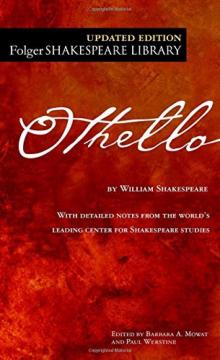 Othello
Othello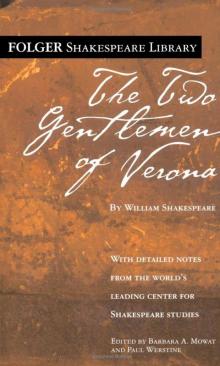 The Two Gentlemen of Verona
The Two Gentlemen of Verona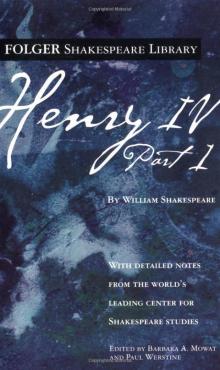 Henry IV, Part 1 (Folger Shakespeare Library)
Henry IV, Part 1 (Folger Shakespeare Library)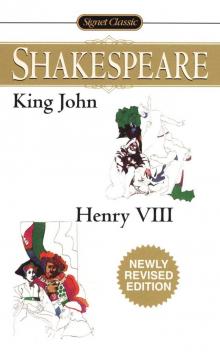 King John/Henry VIII (Signet Classics)
King John/Henry VIII (Signet Classics) The Tempest
The Tempest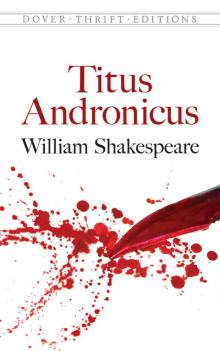 Titus Andronicus (Dover Publications)
Titus Andronicus (Dover Publications)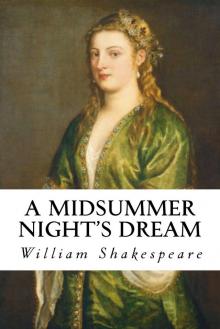 A Midsummer Night's Dream
A Midsummer Night's Dream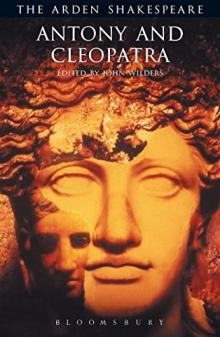 Antony and Cleopatra (Arden Shakespeare: Third Series)
Antony and Cleopatra (Arden Shakespeare: Third Series) The Oxford Shakespeare: Henry IV, Part 2 (Oxford World's Classics)
The Oxford Shakespeare: Henry IV, Part 2 (Oxford World's Classics)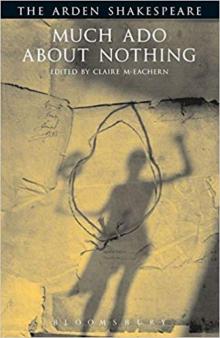 Much Ado About Nothing (Arden Shakespeare: Third Series)
Much Ado About Nothing (Arden Shakespeare: Third Series)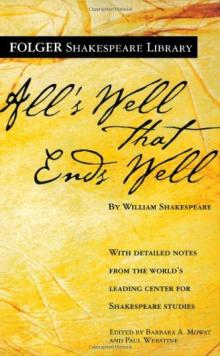 All's Well That Ends Well
All's Well That Ends Well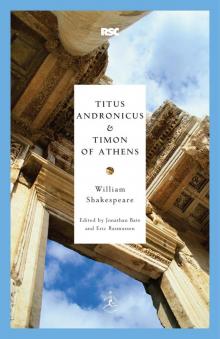 Titus Andronicus & Timon of Athens
Titus Andronicus & Timon of Athens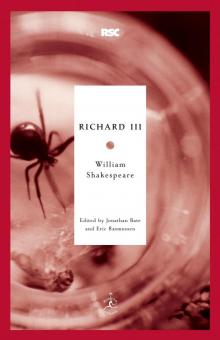 Richard III (Modern Library Classics)
Richard III (Modern Library Classics) Coriolanus
Coriolanus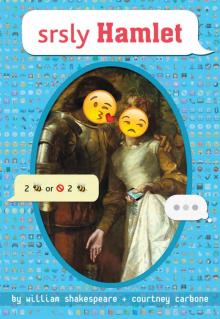 srsly Hamlet (OMG Shakespeare)
srsly Hamlet (OMG Shakespeare)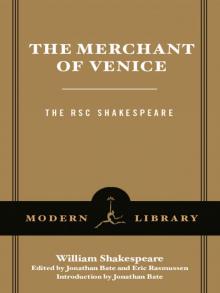 The Merchant of Venice
The Merchant of Venice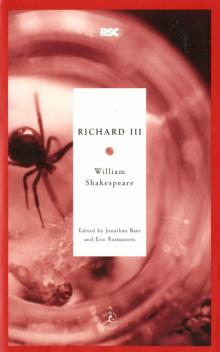 Richard III
Richard III Richard II
Richard II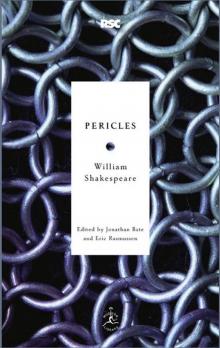 Pericles
Pericles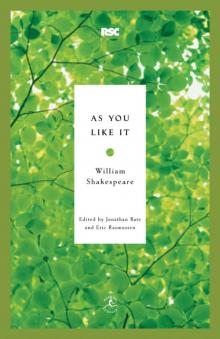 As You Like It
As You Like It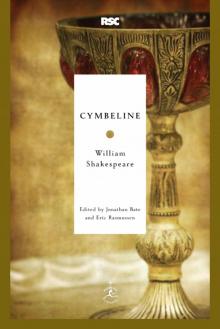 Cymbeline
Cymbeline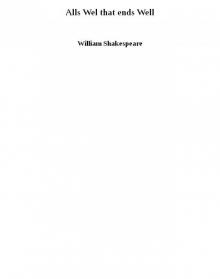 Alls Wel that ends Well
Alls Wel that ends Well YOLO Juliet
YOLO Juliet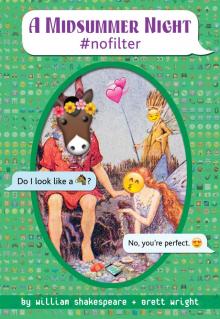 A Midsummer Night #nofilter
A Midsummer Night #nofilter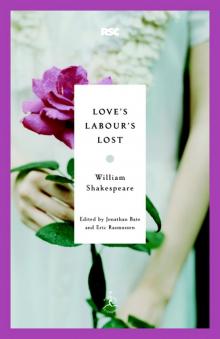 Love's Labour's Lost
Love's Labour's Lost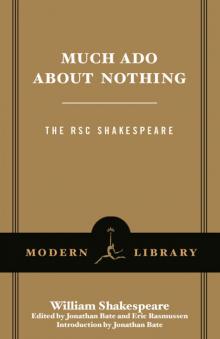 Much Ado About Nothing
Much Ado About Nothing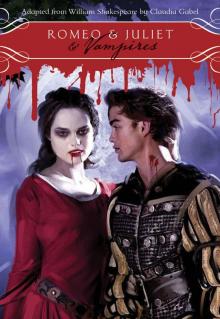 Romeo & Juliet & Vampires
Romeo & Juliet & Vampires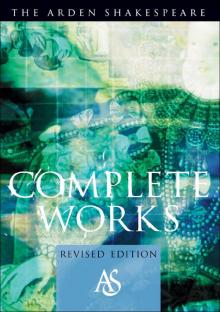 The Arden Shakespeare Complete Works
The Arden Shakespeare Complete Works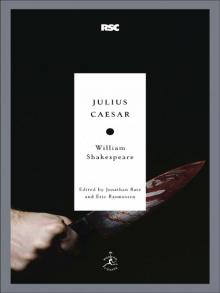 Julius Caesar
Julius Caesar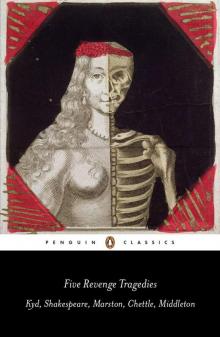 Five Revenge Tragedies: The Spanish Tragedy, Hamlet, Antonio's Revenge, The Tragedy of Hoffman, The Revenger's Tragedy (Penguin Classics)
Five Revenge Tragedies: The Spanish Tragedy, Hamlet, Antonio's Revenge, The Tragedy of Hoffman, The Revenger's Tragedy (Penguin Classics)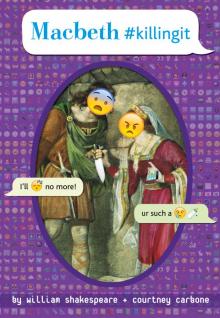 Macbeth #killingit
Macbeth #killingit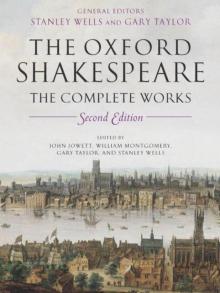 The Oxford Shakespeare: The Complete Works
The Oxford Shakespeare: The Complete Works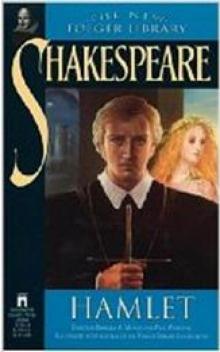 Hamlet, Prince of Denmark (Collins edition)
Hamlet, Prince of Denmark (Collins edition)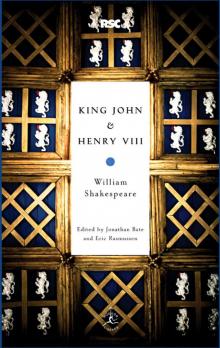 King John & Henry VIII
King John & Henry VIII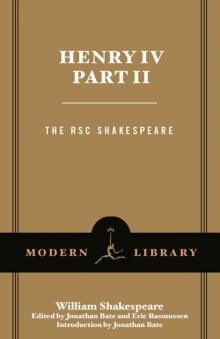 Henry IV, Part 2
Henry IV, Part 2 Complete Plays, The
Complete Plays, The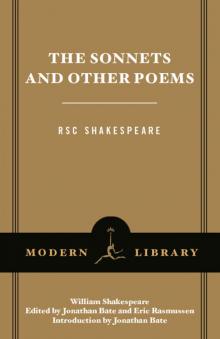 The Sonnets and Other Poems
The Sonnets and Other Poems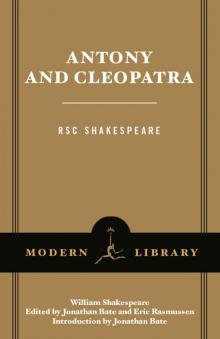 Antony and Cleopatra
Antony and Cleopatra Henry IV, Part 1
Henry IV, Part 1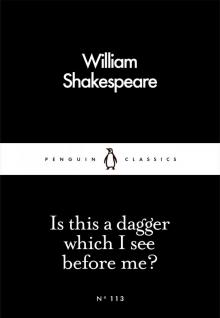 Is This a Dagger Which I See Before Me?
Is This a Dagger Which I See Before Me? The Complete Works of William Shakespeare In Plain and Simple English (Translated)
The Complete Works of William Shakespeare In Plain and Simple English (Translated)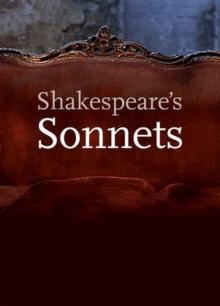 The Sonnets
The Sonnets